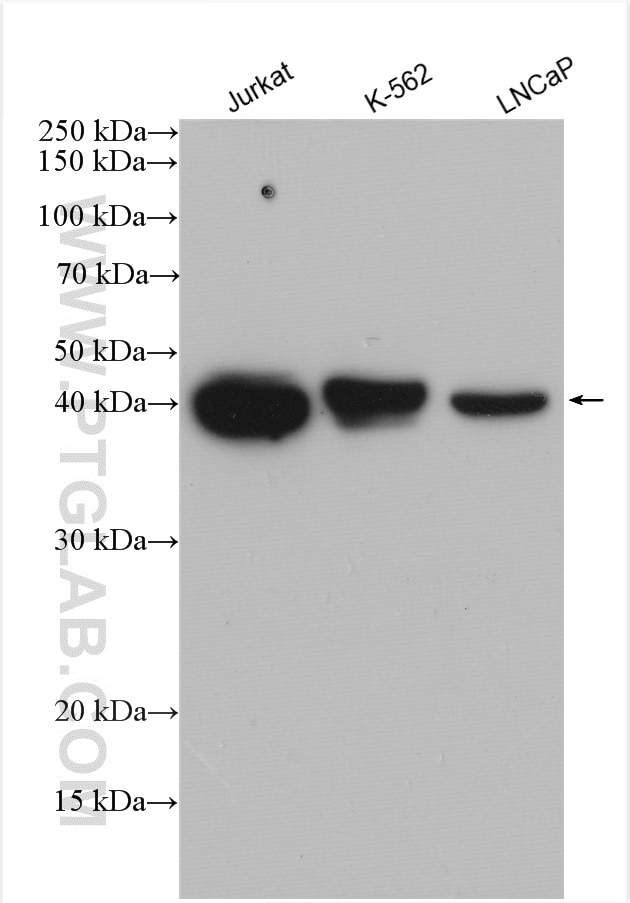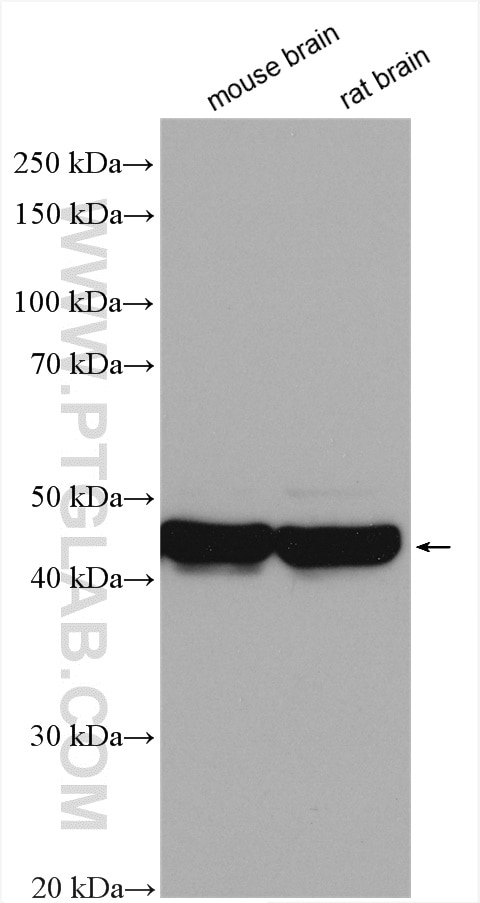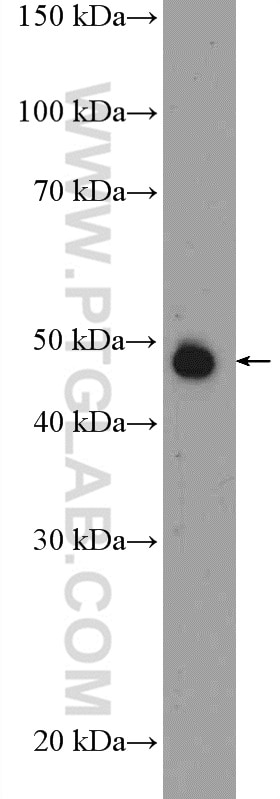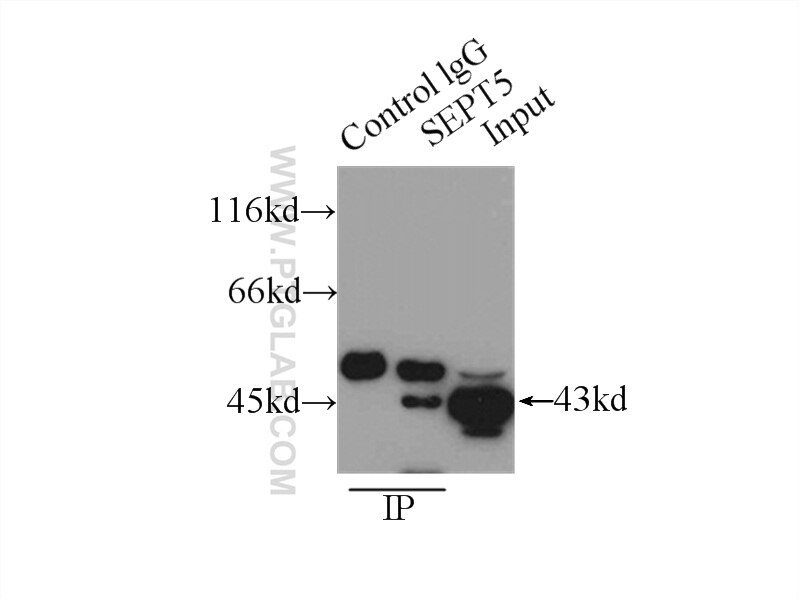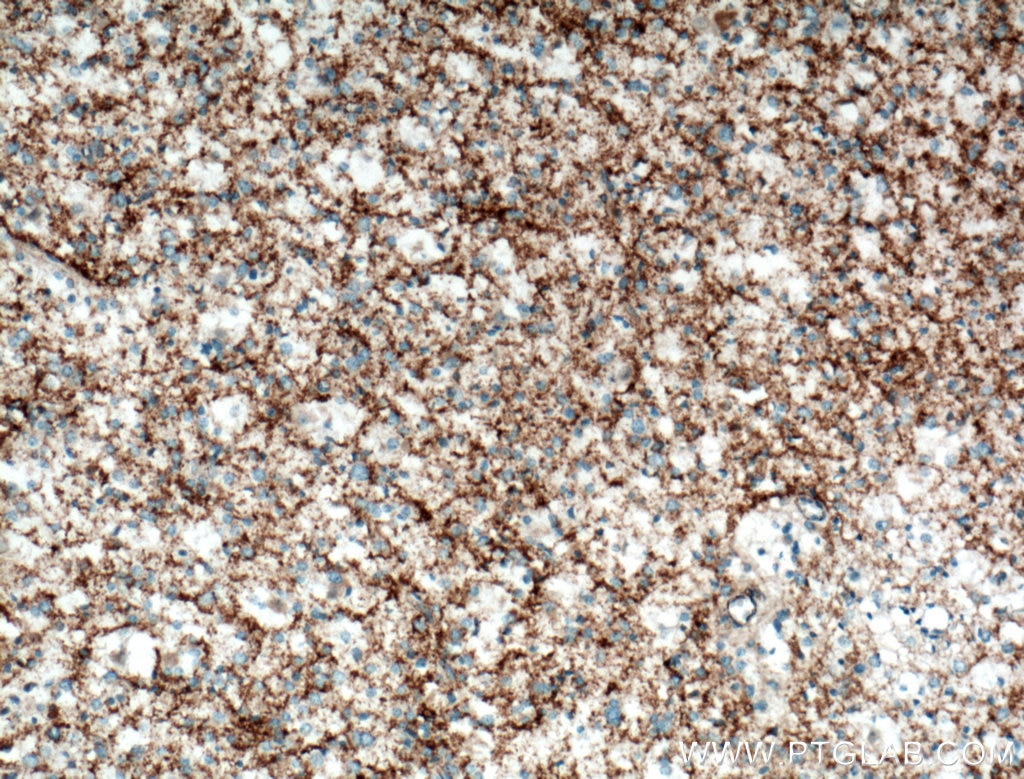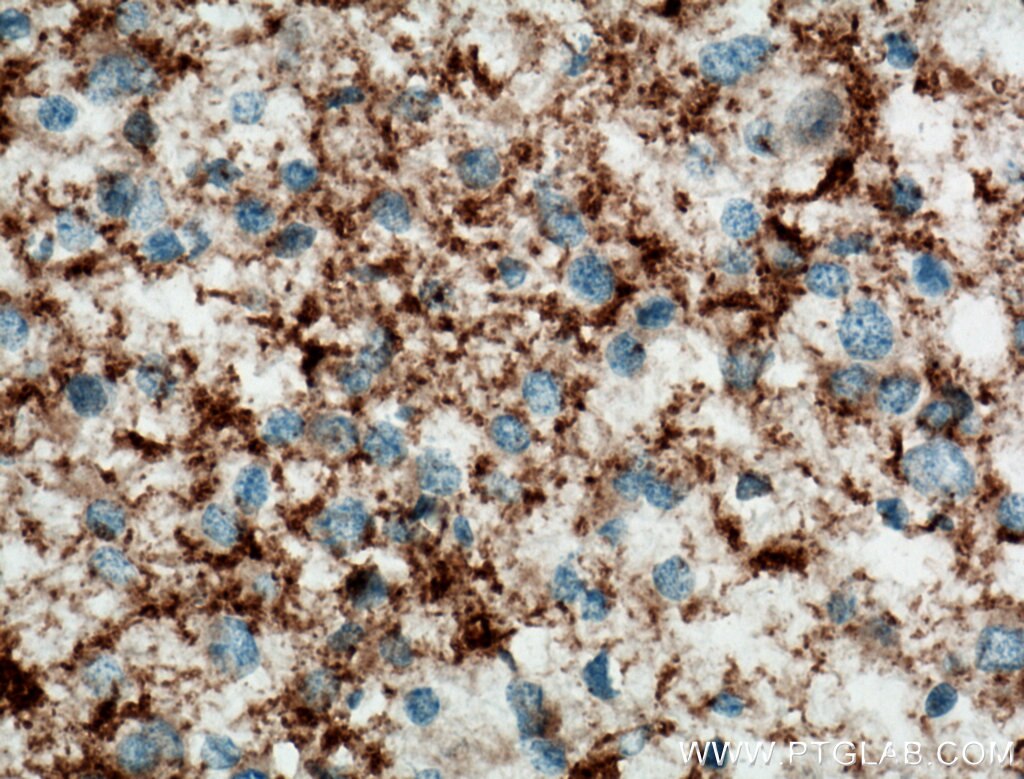- Phare
- Validé par KD/KO
Anticorps Polyclonal de lapin anti-Septin 5
Septin 5 Polyclonal Antibody for WB, IP, IHC, ELISA
Hôte / Isotype
Lapin / IgG
Réactivité testée
Humain, rat, souris
Applications
WB, IHC, IF, IP, ELISA
Conjugaison
Non conjugué
N° de cat : 11631-1-AP
Synonymes
Galerie de données de validation
Applications testées
| Résultats positifs en WB | cellules Jurkat, cellules K-562, cellules LNCaP, cellules NIH/3T3, tissu cérébral de rat, tissu cérébral de souris, tissu cérébral humain |
| Résultats positifs en IP | tissu cérébral de souris |
| Résultats positifs en IHC | tissu de gliome humain, il est suggéré de démasquer l'antigène avec un tampon de TE buffer pH 9.0; (*) À défaut, 'le démasquage de l'antigène peut être 'effectué avec un tampon citrate pH 6,0. |
Dilution recommandée
| Application | Dilution |
|---|---|
| Western Blot (WB) | WB : 1:500-1:2000 |
| Immunoprécipitation (IP) | IP : 0.5-4.0 ug for 1.0-3.0 mg of total protein lysate |
| Immunohistochimie (IHC) | IHC : 1:50-1:500 |
| It is recommended that this reagent should be titrated in each testing system to obtain optimal results. | |
| Sample-dependent, check data in validation data gallery | |
Applications publiées
| KD/KO | See 2 publications below |
| WB | See 9 publications below |
| IF | See 4 publications below |
| IP | See 1 publications below |
Informations sur le produit
11631-1-AP cible Septin 5 dans les applications de WB, IHC, IF, IP, ELISA et montre une réactivité avec des échantillons Humain, rat, souris
| Réactivité | Humain, rat, souris |
| Réactivité citée | rat, Humain, souris |
| Hôte / Isotype | Lapin / IgG |
| Clonalité | Polyclonal |
| Type | Anticorps |
| Immunogène | Septin 5 Protéine recombinante Ag2205 |
| Nom complet | septin 5 |
| Masse moléculaire calculée | 369 aa, 43 kDa |
| Poids moléculaire observé | 40-43 kDa |
| Numéro d’acquisition GenBank | BC025261 |
| Symbole du gène | Septin 5 |
| Identification du gène (NCBI) | 5413 |
| Conjugaison | Non conjugué |
| Forme | Liquide |
| Méthode de purification | Purification par affinité contre l'antigène |
| Tampon de stockage | PBS with 0.02% sodium azide and 50% glycerol |
| Conditions de stockage | Stocker à -20°C. Stable pendant un an après l'expédition. L'aliquotage n'est pas nécessaire pour le stockage à -20oC Les 20ul contiennent 0,1% de BSA. |
Informations générales
Septin 5, a septin family member formerly called cell division control related protein 1 (CDCrel), is encoded in the 200 kb region and is abundantly expressed in the developing and adult brains of mice and humans. Although its constitutive deletion does not cause detectible structural or developmental abnormalities in the mouse brain, Septin 5 has been implicated in subtle neuronal and behavioral functions. Septin 5 is expressed in presynaptic terminals and exerts negative regulatory control over neurotransmitter release by binding to SNARE-protein, which has been implicated in neuropsychiatric disorders (PMID: 19240081). Septin 5 has 2 isoforms with the molecular mass of 39 and 43 kDa.
Protocole
| Product Specific Protocols | |
|---|---|
| WB protocol for Septin 5 antibody 11631-1-AP | Download protocol |
| IHC protocol for Septin 5 antibody 11631-1-AP | Download protocol |
| IP protocol for Septin 5 antibody 11631-1-AP | Download protocol |
| Standard Protocols | |
|---|---|
| Click here to view our Standard Protocols |
Publications
| Species | Application | Title |
|---|---|---|
J Neurosci Cyclin-dependent kinase 5 phosphorylation of human septin SEPT5 (hCDCrel-1) modulates exocytosis. | ||
Neurobiol Dis S327 phosphorylation of the presynaptic protein SEPTIN5 increases in the early stages of neurofibrillary pathology and alters the functionality of SEPTIN5. | ||
Front Mol Neurosci Integrated proteomics and metabolomics analysis of D-pinitol function during hippocampal damage in streptozocin-induced aging-accelerated mice | ||
Cell Signal SEPT5 overexpression predicts poor prognosis and promotes progression through feedback regulation of HIF-1α in clear cell renal cell carcinoma
| ||
Cells Presynaptic Vesicle Protein SEPTIN5 Regulates the Degradation of APP C-Terminal Fragments and the Levels of Aβ.
| ||
Molecules Synergistic Neuroprotective Effect of Endogenously-Produced Hydroxytyrosol and Synaptic Vesicle Proteins on Pheochromocytoma Cell Line Against Salsolinol. |
